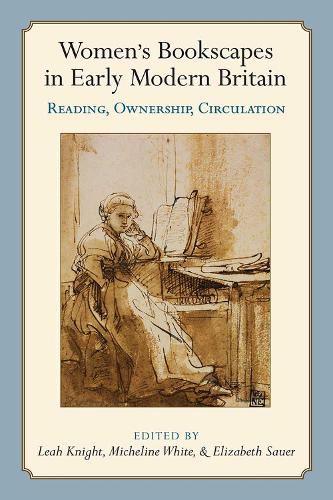Readings Newsletter
Become a Readings Member to make your shopping experience even easier.
Sign in or sign up for free!
You’re not far away from qualifying for FREE standard shipping within Australia
You’ve qualified for FREE standard shipping within Australia
The cart is loading…






Women in 16th- and 17th-century Britain read, annotated, circulated, inventoried, cherished, criticized, prescribed, and proscribed books in various historically distinctive ways. Yet, unlike that of their male counterparts, the study of women’s reading practices and book ownership has been an elusive and largely overlooked field.
In thirteen probing essays, Women’s Bookscapes brings together the work of internationally renowned scholars investigating key questions about early modern British women’s figurative, material, and cultural relationships with books. What constitutes evidence of women’s readerly engagement? How did women use books to achieve personal, political, religious, literary, economic, social, familial, or communal goals? How does new evidence of women’s libraries and book usage challenge received ideas about gender in relation to knowledge, education, confessional affiliations, family ties, and sociability? How do digital tools offer new possibilities for the recovery of information on early modern women readers?
The volume’s three-part structure highlights case studies of individual readers and their libraries; analyses of readers and readership in the context of their interpretive communities; and new types of scholarly evidence-lists of confiscated books and convent rules, for example-as well as new methodologies and technologies for ongoing research in the field. These essays dismantle binaries of private and public; reading and writing; female and male literary engagement and production; and ownership and authorship.
Women’s Bookscapes is interdisciplinary, timely, cohesive, and concise. Its fresh and revisionary approaches cultivate this burgeoning field and diversify research and analytical methods for current and future scholars. The volume makes substantial contributions to scholarship on early modern material culture; book history and print culture; women’s literary and cultural history; library studies; and reading and collecting practices more generally.
$9.00 standard shipping within Australia
FREE standard shipping within Australia for orders over $100.00
Express & International shipping calculated at checkout
Women in 16th- and 17th-century Britain read, annotated, circulated, inventoried, cherished, criticized, prescribed, and proscribed books in various historically distinctive ways. Yet, unlike that of their male counterparts, the study of women’s reading practices and book ownership has been an elusive and largely overlooked field.
In thirteen probing essays, Women’s Bookscapes brings together the work of internationally renowned scholars investigating key questions about early modern British women’s figurative, material, and cultural relationships with books. What constitutes evidence of women’s readerly engagement? How did women use books to achieve personal, political, religious, literary, economic, social, familial, or communal goals? How does new evidence of women’s libraries and book usage challenge received ideas about gender in relation to knowledge, education, confessional affiliations, family ties, and sociability? How do digital tools offer new possibilities for the recovery of information on early modern women readers?
The volume’s three-part structure highlights case studies of individual readers and their libraries; analyses of readers and readership in the context of their interpretive communities; and new types of scholarly evidence-lists of confiscated books and convent rules, for example-as well as new methodologies and technologies for ongoing research in the field. These essays dismantle binaries of private and public; reading and writing; female and male literary engagement and production; and ownership and authorship.
Women’s Bookscapes is interdisciplinary, timely, cohesive, and concise. Its fresh and revisionary approaches cultivate this burgeoning field and diversify research and analytical methods for current and future scholars. The volume makes substantial contributions to scholarship on early modern material culture; book history and print culture; women’s literary and cultural history; library studies; and reading and collecting practices more generally.